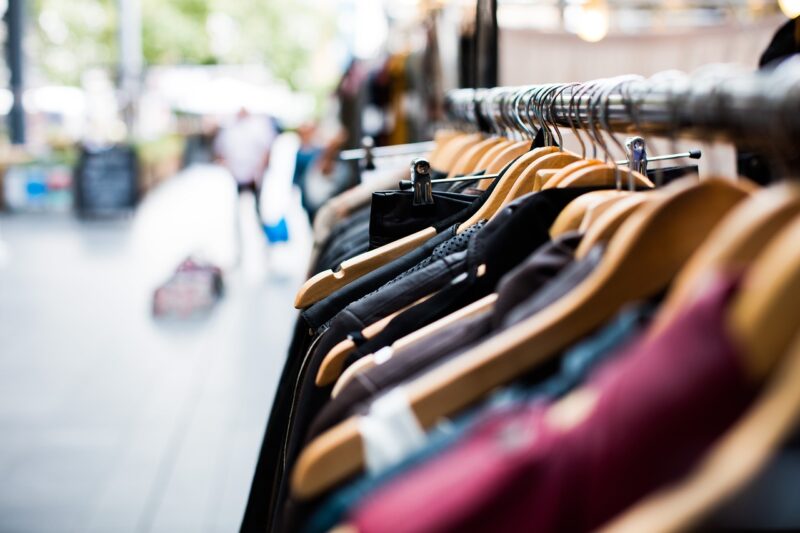When Fashion Meets Function: The Intersection of Style and Technology
November 19, 2024

In today’s fast-paced world, fashion is no longer just about aesthetics; it is intricately tied to technology in ways that enhance our daily lives. The intersection of style and technology represents a new era for the fashion industry, where functionality meets modern design, creating innovative solutions that cater to both form and function. This article explores how technology is revolutionizing fashion, from wearable technology to sustainable practices, and highlights key trends that are shaping the future of the industry.
1. The Rise of Wearable Technology
Wearable technology has become a game-changer in the fashion industry, enabling consumers to incorporate tech advancements into their daily wardrobes. From fitness trackers to smartwatches, these gadgets not only keep us connected but also offer unique insights into our health and productivity.
**Innovations in Wearables:**
- Smart Clothing: Clothes embedded with sensors that monitor vital signs or track physical activities. Companies like Athos have developed athletic wear that provides real-time feedback on performance, encouraging users to improve their fitness levels.
- Fashionable Wearables: Designers are teaming up with tech companies to create accessories that blend seamlessly into stylish outfits. Brands like Moncler and Google collaborated on the ‘smart’ jacket, which offers connectivity while maintaining a cutting-edge aesthetic.
- Augmented Reality (AR): AR applications allow consumers to try on clothes virtually before making a purchase. This technology eliminates the hassle of returns and enhances the shopping experience, paving the way for a more personalized approach to retail.
Wearable technology signifies a paradigm shift in how we view clothing, transitioning from mere fashion statements to practical, high-tech solutions that enrich our daily lives.
2. Sustainable Fashion Through Technological Innovation
As the world becomes more aware of environmental issues, the fashion industry has begun embracing sustainability through innovative technologies. Fashion labels are utilizing tech to minimize waste, reduce carbon footprints, and create eco-friendly products.
**Sustainable Practices Lifted by Technology:**
- 3D Printing: This technology enables designers to create prototypes with minimal material waste, ensuring a more sustainable production process. High-end brands have already begun experimenting with 3D-printed garments, forging a path towards eco-conscious fashion innovation.
- Smart Fabrics: Innovations like biodegradable fabrics or those made from recycled plastic revolutionize how we think about sourcing materials. Companies such as Adidas have launched shoes made from ocean waste, marrying style with sustainability.
- Blockchain Technology: Many brands are now utilizing blockchain to ensure transparency in the supply chain. This technology allows consumers to trace the origins of their garments, ensuring ethical practices throughout the production process.
The integration of sustainability and technology sets a new standard for the fashion industry, prompting both consumers and brands to prioritize ethical consumption alongside style.
3. The Influence of Social Media and E-commerce
Social media has reshaped the fashion landscape, allowing brands to leverage technology to promote their products more effectively. Platforms like Instagram, TikTok, and Pinterest have transformed how consumers discover and purchase fashion items.
**Key Developments in Social Media Influencing Fashion:**
- Influencer Marketing: Fashion influencers have become powerful trendsetters, where brands collaborate with popular figures to reach their target audiences. This partnership blends authentic content with brand visibility, resulting in increased engagement and sales.
- Augmented Reality for Try-On Experiences: With AR technology, consumers can see how a product looks on them before making a purchase. This feature has been integrated into platforms like Snapchat and Instagram, enhancing user experience and driving conversions.
- Direct-to-Consumer Brands: The rise of DTC brands enabled companies to connect directly with consumers, utilizing data insights to tailor their offerings. This strategy allows for a quicker turnaround on trends and fosters a more personalized shopping experience.
The marriage between social media and fashion technology continues to shape the industry, creating new opportunities for both consumers and brands to engage meaningfully.
4. The Future of Fashion Technology
As technology advances, the possibilities for fashion remain limitless. The future of fashion will likely be defined by continued innovation, customized experiences, and a stronger emphasis on sustainability. Here are emerging trends to consider:
- AI-Powered Personalization: Artificial intelligence will play a crucial role in tailoring shopping experiences. AI tools can predict trends, suggest styles based on consumer preferences, and even provide personalized online shopping assistants to guide users throughout the purchasing process.
- Virtual Fashion Shows: The rise of virtual fashion shows allowed brands to reach a wider audience without the barriers of physical attendance. This mode of presentation is likely to continue shaping how fashion is showcased in the digital age.
- Sustainable Tech Aesthetics: As consumer demand for sustainable practices heightens, brands will increasingly adopt and promote eco-technology. Expect to see more clothing lines utilizing sustainable materials that are not only environmentally friendly but also aesthetically appealing.
The convergence of fashion and technology is paving a new path for the industry, where innovation enhances creativity, and function meets style.
Conclusion
In conclusion, the intersection of fashion and technology signifies a significant shift in the industry. As consumers become more tech-savvy, the demand for innovative, functional, and stylish products continues to rise. Whether through wearable technology, sustainable practices, or the influence of social media, fashion is evolving to meet the needs of modern society, creating a fascinating landscape for future exploration. The modern consumer is now empowered to blend style with practicality, making informed choices that reflect their values while enjoying the panache of contemporary fashion.
As we move forward, businesses must adapt to this new era by embracing technology not just as a tool but as an integral part of their identity, fostering sustainability, and enhancing consumer engagement in exciting new ways.







